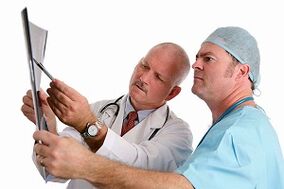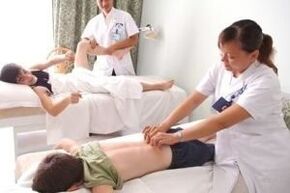Osteoarthritis of the joint, with the progression of cartilage tissue destruction, is often diagnosed in men and women at a young age. The characteristic symptom of onset of disease is severe pain, which occurs even at rest, when there is no load on the extremities. To reduce bothersome discomfort and prevent the destruction of cartilage structures, complex treatment is prescribed.

What is this disease?
Osteoarthritis is a common, terrible chronic disease that affects almost the entire population.
Pathology is characterized by inflammatory lesions of the cartilaginous tissues of large and small joints. Due to degenerative changes in the cartilage, surrounding joints, synovial membranes, muscle and ligament structures, and bone tissue are affected. The root cause of the development of such a pathology is considered to be a disturbed metabolism. A complete cure is not possible, it can only bring the patient to remission, which is why joint disease, gradually destroying the joint system is very dangerous. Arthritis is most often diagnosed in old age, but it also occurs in young people over the age of 20. It is important to diagnose its early stage of development. This will prevent new complications and help your body cope with the problem.
Reasons for development

Violation of metabolic processes in the joints causes the onset of the disease. Pathology is a feature of one or more joints at the same time. Other common causes of joint disease are:
- Hormonal changes in women during menopause;
- violation of the blood supply to the joints;
- persistent hypothermia;
- chronic damage;
- old age;
- excess weight;
- increased stress on joints;
- autoimmune pathology;
- a diseased thyroid gland;
- hemophilia;
- Herpes;
- Hepatitis;
- allergies in which bone and joint structures are affected;
- varicose veins;
- strict diet or unbalanced meals;
- excessive physical activity;
- heredity;
- unfavorable environment.
Joint changes are observed in people who have to work under difficult physical conditions. These are the specific subjects:
- miner;
- Mason;
- alchemist;
- blacksmith;
- angler.
Characteristic stages and symptoms

Signs of joint disease develop gradually and increase as the disease progresses. There are 3 stages of joint disease:
- At the first stage, there is no morphological change, only the disturbance of the synovial fluid composition, so the cartilage tissues receive less nutrients, rapidly losing elasticity and endurance. There is inflammation in the joint cavity, the pain begins to bother.
- In stage II, the degenerative process develops more actively. The cartilage of the joint is gradually destroyed, uric acid is not eliminated from the body, resulting in the first bone growth in the joint appearing. This limits the movement of the joints, so inflammation progresses, persistent pain of the limb muscles disturbs.
- Grade III is manifested by complete thinning of the cartilage tissue of the joint, and deformation of the joint is also observed. There are signs of axis change in the limbs. In addition, degenerative disorders in the ligamentous apparatus begin, so that the limb can no longer move normally, an increase in movement is observed in association with a violation of the natural range of motion. Arthralgia stage 3 continuously, the patient cannot lie still, sleep, rest. Complete malnutrition of the joint risks disrupting the functioning of the affected limb.
Other symptoms

The disease causes characteristic signs in a person, which are conventionally divided into 4 groups:
- Pain. Severe pain in the joints that does not go away for a long time is the first symptom that characterizes the progression of the disease. Pain caused by any movement or physical activity, but when you rest, the sick person will get better and the discomfort will decrease.
- Cracking sound. This symptom is manifested during the exacerbation of joint disease. Due to a long time the cartilage tissue of the joint is deformed, the bone structures begin to collide and rub against each other. As the crackling noise increases, pain syndrome will also progress.
- Impaired joint mobility. Progressive osteoarthritis of bones leads to increased bone formation. As a result, muscle tissue contracts, and the gap in the joint gradually decreases. The increased pressure in the joint also makes limbs immobilize.
- Joint deformation. The rapid growth of bone cells can cause compound change, but this symptom develops at a later stage.
Types of arthritis of the joints
Distinguish between idiopathic or primary and secondary joint disease. The first type is an independent disease that occurs as a result of age-related physiological changes. But the secondary form arises on the background of chronic trauma and can manifest itself at any age - 20 or 30 years old. Consider which joint is affected, joint disease is distinguished:
- shoulder or elbow joints;
- hip or knee joint;
- backbone.
In addition, the disease also occurs:
- fine;
- Unknown.
Why is it dangerous?

Acute joint disease is terrible because, as the pathology progresses, the spine is involved in the degenerative process, so a hernia appears. Therefore, it is important to effectively treat joint disease at an early stage of development, when conservative approaches can then be applied. If the medication is not given on time or the patient tries to self-medicate, the following disorders start to appear:
- deformation and destruction of joint elements;
- limited mobility of limbs;
- disabilities;
- violations of the bio-mechanics of the spine due to subsidence of the disc.
Diagnose
Before prescribing an effective treatment for joint disease or removing affected areas, it is important to know an accurate diagnosis. So, after the initial examination, the patient is sent through:
- general clinical analysis of blood and urine;
- puncture of synovial fluid, if a knee bursitis is suspected;
- a sample for histological examination of a biological pathway.
Instrumental diagnosis is performed - an X-ray. If the patient has gonarthrosis (especially clearly varicose veins), an X-ray of the knee joint should be taken. With dysplasia and fibrosis of the hip joints, this area of the musculoskeletal system is examined. To identify the types of cartilage structural damage, an ultrasound, MRI or CT scan should be performed.
How to treat?
Medicine and surgery
Early joint disease is treated with conservative therapy. The drug is selected by a strict doctor according to an individual program. If a person has gastric ulcer or other pathologies of the organs of the gastrointestinal tract, then oral administration is contraindicated. In this case, the injectable will give the appropriate effect. The correct prescription of the drug enhances metabolic activity in the affected areas. Effective groups of drugs, whereby remission is prolonged:
- Anti-inflammatory;
- Hormonal corticosteroids;
- Chondroprotectors.
If conservative methods are not working, surgical treatment is indicated. For the relief of joint pain, palliative activities are indicated. When a joint is completely destroyed, surgical therapy is performed to replace it, which is called orthopedic surgery. Since new technologies have made progress in the field of prostheses, people with replaced joints can live a different but full life.
Exercise therapy, physical therapy, massage

Kinesitherapy is the name of a therapy developed by a famous doctor. This is a set of physics exercises that must be performed on special simulation equipment. Regular exercise will help normalize the condition of the joint and improve its function. This means that it is advisable to do exercises in hospitals that specialize in diseases of the musculoskeletal system.
Massage procedures performed by a chiropractor help normalize the supply of blood and nutrients to the affected areas, so the joint condition will gradually improve. If the causes of arthritis are precisely known and there are no contraindications, then a physical therapy process is prescribed, for example, as follows:
- electrophoresis;
- acupuncture therapy;
- laser treatment;
- mud therapy;
- Medical application based on natural plastic.
The necessity of a diet
If the arthritis is caused by obesity, the patient should follow a diet that will help normalize body weight, which will significantly reduce the load on the joints and improve their function. In order for cartilage tissue to recover faster, doctors advise their patients to eat bone broth and jellies more often. Thanks to the collagen found in these dishes, connective tissue begins to regenerate and repair faster. It is important to monitor the balance and completeness of the diet. Food should be diverse, rich in vitamins, trace elements and macro.
Preventive
In order to avoid the progression of such a dangerous and serious disease, it is important to reduce the load on the joints, especially those of the lower extremities. It is also worthwhile to avoid injuries and fractures, after which the risk of joint disease increases by 10 times. It's important to have an active lifestyle, get regular morning exercise, eat right, and track your weight. Thanks to these rules, you will be able to protect yourself from the occurrence of destructive or recurrent pathology.

























